Understanding Warp Charger: Technology and Implications
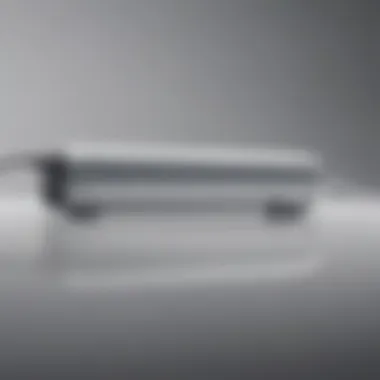
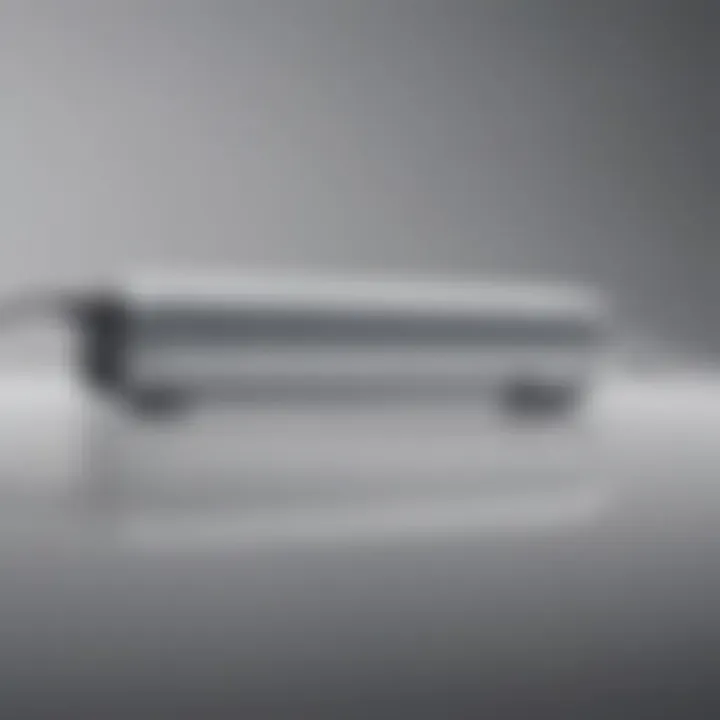
Intro
The evolution of smartphone technology is closely linked with advancements in charging solutions. As devices become more powerful, the demand for faster and more efficient charging methods intensifies. This is where Warp Charger comes into play. Available in various models, Warp Charger aims to enhance the user experience by reducing downtime associated with battery charging. Understanding its detailed features and implications can help both consumers and tech enthusiasts appreciate its significance in the modern mobile ecosystem.
In this article, we will explore Warp Charger technology, focusing on its design principles, technical specifications, and the practical implications for everyday smartphone users. Warp Charger stands out not just for its speed but also for its intelligent optimization of power delivery, making it a topic of high interest in the context of charging advancements.
Additionally, we will discuss the broader implications of using Warp Charger in a rapidly developing technological landscape, examining how it integrates with existing smartphone features and the role it might play in future innovations.
Prelims to Warp Charger
In the ever-evolving landscape of mobile technology, Warp Charger has emerged as a pivotal component in the quest for enhanced charging efficiency. Understanding this technology is essential for tech enthusiasts and everyday users alike because it represents not just a leap in charging speed but also implications for device longevity and user convenience.
Warp Charging is a product of rapid advancements in electrical engineering. As smartphones have become indispensable, the demand for quicker, safer, and more efficient charging solutions has surged. This technology aims to meet and exceed these expectations.
Definition and Origin
Warp Charger was developed by OnePlus as a response to user needs for faster charging without the corresponding risks. It operates on the principle of providing a higher wattage compared to traditional chargers, facilitating quicker battery fill-ups. Initially launched as Dash Charge, it rebranded to Warp Charge to signify improvements and expand its functionalities.
The primary goal was to provide a seamless charging experience. The technology integrates unique circuit designs that enhance the transfer of power from the charger to the device. This charger is embedded into the OnePlus device ecosystem but has also influenced broader mobile charging technologies.
Significant Developments in Charging Technology
Charging technology has experienced notable developments over the years. Warp Charger represents a synthesis of several innovations:
- Increased Wattage: Most traditional chargers output between 5 to 15 watts. Warp Charger can deliver power levels significantly above this, such as 30 watts or more, making it a game-changer in speed.
- Intelligent Temperature Management: The charger is designed to monitor heat levels during charging, minimizing risks of overheating. This feature enhances user confidence, knowing their device can charge rapidly while still being protected.
- Compatibility and Integration: Initially exclusive to OnePlus models, Warp Charger’s principles encourage compatibility across various devices within the tech ecosystem. As brands adopt similar rapid charging technologies, the potential for universal fast charging standards rises.
"Warp Charger signifies the future of mobile charging, embodying the essence of speed and safety."
The history of charging technology reflects a strong focus on speed but often at the cost of safety and device integrity. Warp Charger appears as a solution to these challenges. By exploring the precise mechanics behind its operations in future sections, a clearer picture emerges of its impact on contemporary mobile charging solutions.
How Warp Charger Works
The ability of Warp Charger to enhance the charging experience is not accidental. Understanding how Warp Charger works is crucial as this knowledge illuminates the benefits and potential challenges associated with its usage. The section focuses on various elements such as technical specifications, the unique charging mechanism, and how it aligns with multiple devices in the market.
Technical Specifications
Warp Charger works under the principle of delivering high amounts of power through smart technology. The original version of Warp Charger provides a power output of up to 30W. This significant power level translates to faster charging times compared to standard chargers. Unlike conventional charging systems that may struggle to optimize voltage and current, Warp Charger features advanced power delivery protocols. These protocols allow seamless adjustments based on the device’s needs. The charger is designed with multiple safety features including short-circuit protection and intelligent thermal management. Such measures ensure the safety of both the device and the charger during operation. Additionally, Warp Charger is compatible with USB Type-C cables, which is becoming the norm in modern smartphones.
Charging Mechanism
The charging mechanism of Warp Charger is a blend of innovative technology and engineering. It employs a technique known as fast charging, which leverages higher voltage levels while maintaining lower current. This unique approach minimizes heat generation. When a compatible device is connected, the Warp Charger identifies its power requirements and adaptively alters the power supply. This ensures optimal conditions for the battery, improving both charge time and longevity. The efficiency of this method is noteworthy. Most users can achieve significant battery restoration in less than an hour. Furthermore, Warp Charger leaves behind a smaller environmental footprint compared to traditional chargers, making it a more sustainable choice for users.
Compatibility with Devices
A discussion of Warp Charger's functionality is incomplete without addressing its device compatibility. The charger is specifically optimized for OnePlus devices, yet it remains broadly compatible with any smartphones designed under the USB Power Delivery standard. However, to achieve maximum efficiency, it is ideal to utilize Warp Charger with its recommended OnePlus models. Consumers should be aware that while other devices can connect to the Warp Charger, the charging speeds will vary significantly based on the device's own charging capabilities. This versatility enhances Warp Charger’s appeal, making it a prudent choice for users with multiple devices.
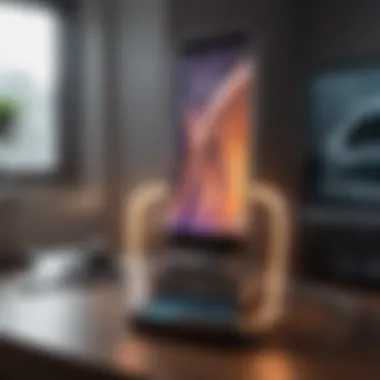

"Warp Charger offers users a glimpse into the future of mobile charging with its innovative approach and adaptability across devices."
In summary, understanding how Warp Charger functions reveals the considerable advancements it presents in mobile charging technology, addressing both user needs and evolving tech landscapes. Its technical specifications, unique charging mechanism, and broad compatibility provide valuable insights for any tech enthusiast.
Advantages of Using Warp Charger
The Warp Charger brings several distinct advanteges that set it apart from traditional charging methods. Understanding these benefits is crucial for smartphone users and tech enthusiasts who are looking for optimal charging solutions. There are three primary elements that define the advantages of using Warp Charger: speed of charging, battery longevity, and user convenience.
Speed of Charging
Speed is perhaps the most notable attribute of Warp Charger technology. Traditional charging methods often require hours to fully charge a smartphone. In contrast, Warp Charger significantly reduces the time to just a fraction of that. For instance, a typical Warp Charger can fully recharge a device in less than an hour. This is particularly beneficial for individuals who are constantly on the go.
The accelerated charging speed is due to its capacity to deliver high wattage to devices. This means that users can spend less time plugged in and more time utilizing their devices. As the demand for rapid recharging continues to rise, the Warp Charger meets this need effectively. However, this speed also comes with consideration; rapid charging can sometimes lead to increased device heat.
Battery Longevity
Battery longevity is a paramount factor when discussing charging technologies. While rapid charging is convenient, users may worry about the impact on battery life. Warp Charger, however, is designed to maintain battery integrity through intelligent power management.
This technology optimizes the charging process to prevent overcharging and excessive heat buildup. The smart charging system allows the battery to sustain its health longer compared to older charging methods. Proper battery maintenance ensures that users can enjoy extended device usage without rapid degradation of battery capacity. Thus, Warp Charger not only provides speed but also supports longer battery lifespan.
User Convenience
User convenience is a crucial aspect that often determines the choice of a charging solution. Warp Charger enhances this experience through its simplicity and efficiency. Users can easily connect the device and expect a swift charge. There’s no need to readjust settings or worry about incorrect plug-ins as many chargers require.
In addition, the design of Warp Charger is compatible with a variety of devices, which adds to its user-friendliness. Users do not have to invest in multiple charging solutions for different devices. The single, powerful charger handles various charging needs without complications.
In summary, the Warp Charger provides efficient speed, contributes to battery health, and simplifies the charging experience.
Integrating Warp Charger into your charging routine means embracing the future of technology. By understanding these advantages, consumers are better equipped to make informed decisions about their charging needs.
Challenges and Limitations
Understanding the challenges and limitations of Warp Charger technology is essential for evaluating its overall effectiveness in the marketplace. While this charging solution does offer several advantages, there are inherent issues that influence user experience and device compatibility. Addressing these challenges ensures that users are well-informed and can make educated choices about their charging options.
Heat Generation Issues
Heat generation remains a prominent concern when using Warp Charger technology. The rapid charging speed, though beneficial, leads to increased thermal output. This may pose risks to device longevity if not properly managed. Excessive heat can degrade battery cells over time, leading to a reduced lifespan of the device. Therefore, manufacturers are tasked with designing protections to mitigate heat buildup.
Modern smartphones, such as those from OnePlus, incorporate thermal management systems designed to handle this issue. These systems often include dissipative materials and intelligent charging algorithms. The balance between speed and heat reduction becomes crucial. Users must be aware that while Warp Charging can power their devices quickly, doing so may produce uncomfortable heat levels during the process.
In practical terms, ensuring that the charger and the device are used on flat, non-insulating surfaces can help maintain better cooling. Users should also be cautious during intense usage while charging, as this can compound heat issues. Understanding these aspects allows users to make more informed decisions regarding charging practices.
Device and Charger Compatibility
The compatibility of Warp Charger with various devices is another significant limitation. While Warp Charger technology has been adopted by many smartphones, it is not universally applicable to all brands. For instance, a OnePlus charger may not work efficiently with a Samsung device, as they employ different charging protocols. This incompatibility can lead to slower charging speeds or, in the worst-case scenario, no charging at all.
Moreover, the charger itself must be able to support Warp charging, which requires specific hardware setups. Using a non-compatible charger or cable can diminish the effectiveness of the charging experience. Users are encouraged to always utilize certified cables and chargers to ensure optimal performance.


Additionally, as smartphone technology evolves, older devices may miss out on the advancements in charging tech like Warp Charger. This can create a divide between newer and older devices, affecting user experience. In market terms, although Warp Charger has gained substantial attention, its integration is still limited. Many users need to navigate this landscape of compatibility to maximize their charging efficiency.
"The advancement of charging technology like Warp Charger brings benefits, but understanding its challenges is paramount to avoiding pitfalls."
Comparison with Other Charging Technologies
Understanding the nuances of Warp Charger technology entails a thorough comparison with existing charging methods. This section addresses how Warp Charger stands in relation to standard charging methods, fast charging technologies, and wireless options. By examining these elements, the reader can appreciate the advancements and limitations that Warp Charger presents in the broader context of mobile charging solutions.
Standard Charging Methods
Standard charging methods primarily involve the use of traditional chargers that deliver a consistent power output, typically around 5 Watts. These chargers are ubiquitous, found in almost all aspects of everyday life, and often represent the most basic means of powering devices. While convenient, standard chargers tend to be slower, often requiring several hours to completely charge a device. This speed deficiency is a significant drawback for users with demanding lifestyles.
Advantages of Standard Charging Methods:
- Easy to use with any device
- Generally more affordable
- Lower heat generation
However, reliance on standard methods does limit one’s ability to quickly recharge devices. Users seeking convenience and efficiency increasingly look for faster alternatives, which has led to the evolution of charging technology.
Fast Charging Technologies
Fast charging technologies, such as Qualcomm's Quick Charge and USB Power Delivery, have gained recognition for their ability to deliver higher power outputs ranging from 18 Watts to over 100 Watts. These technologies significantly reduce charging time while ensuring compatibility across various devices.
Key Features of Fast Charging Technologies:
- Dynamic voltage adjustment to optimize charging speed
- Compatibility with a range of devices
- Enhanced circuit designs that prevent overheating
Warp Charger goes beyond this by employing a bespoke technology designed specifically for rapid charging, achieving speeds that exceed many fast charging solutions currently available. This aspect makes it an appealing option for users seeking the ultimate in charging efficiency.
Wireless Charging vs. Warp Charging
Wireless charging has emerged as a popular alternative, with technologies like Qi charging enabling users to recharge their devices simply by placing them on a pad. This solution promotes convenience, but often at the cost of speed, typically limiting charging power to 5-15 Watts.
Comparative Points Between Wireless Charging and Warp Charging:
- Efficiency: Warp Charger provides significantly faster charge times compared to most wireless solutions.
- Heat Management: Warp Charger is designed for optimal heat distribution, whereas wireless chargers often generate more heat due to energy loss during transmission.
- User Experience: While wireless charging offers ease of use, the speed of Warp Charging greatly enhances the user experience for those constantly on the go.
"Warp Charger demonstrates a marked advantage in speed and efficiency compared to other methods, making it particularly suited for modern user demands."
In summary, while traditional charging methods and wireless solutions provide distinct advantages, Warp Charging technologies offer a compelling blend of speed, efficiency, and user convenience that addresses the growing demand for rapid device recharging.
Market Adoption of Warp Charger
The market adoption of Warp Charger is crucial for understanding how this technology influences the broader mobile charging ecosystem. It reflects not only the current trends in smartphone charging solutions but also the demands of consumers and manufacturers in an increasingly competitive market. The adoption rate provides insight into the performance of Warp Charging compared to traditional methods and highlights its potential impact on battery technology and user experience.
Current Device Integration
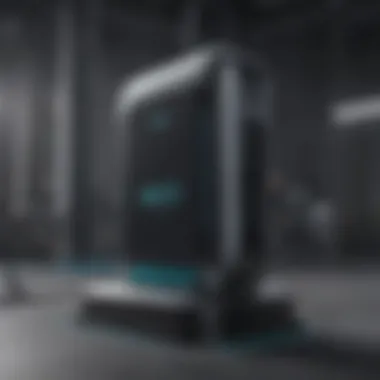
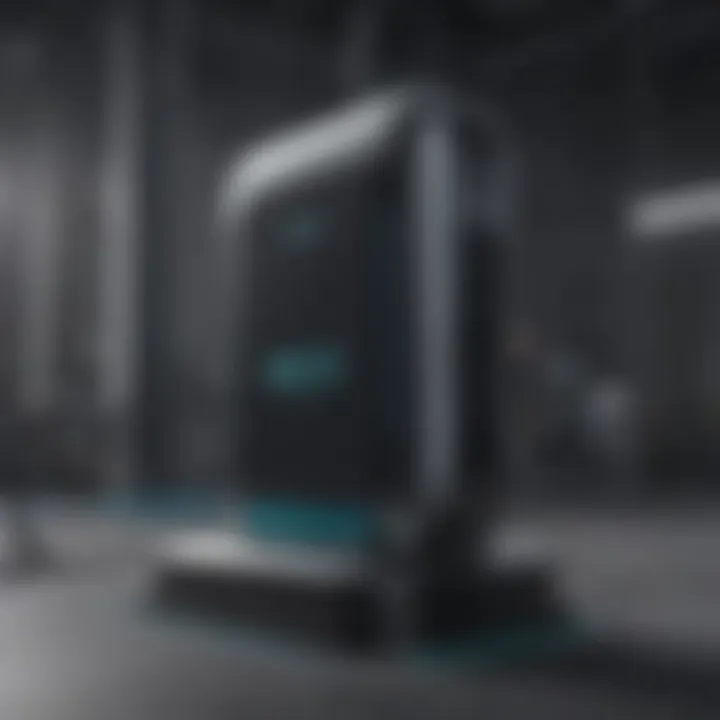
Warp Charger technology has been integrated into various devices, primarily focusing on OnePlus smartphones. This integration showcases how manufacturers prioritize fast charging capabilities to enhance user experience. Currently, devices like the OnePlus 8 series, OnePlus 9 series, and the latest offerings have embraced Warp Charging. The charger itself is designed to work seamlessly with these devices, offering 30W, 65W, or even higher charging speeds depending on the model.
The technology is not only limited to smartphones but is also making waves in accessories. For example, the Warp Charge 30 power bank extends this technology to portable solutions. As consumer demand for rapid charging rises, other tech brands may follow suit by adopting similar charging technologies in upcoming releases.
Consumer Reception
The reception of Warp Charger among consumers has been largely positive, particularly from tech enthusiasts and avid smartphone users. Many appreciate the capability of quickly replenishing battery life, which caters to a fast-paced lifestyle. Surveys indicate that users value the reduction in charging time as it allows for more flexibility in usage.
However, some concerns have been raised regarding heat generation during high-speed charging. Users have voiced apprehension about long-term battery health when using Warp Charger technology consistently. Despite these concerns, the general sentiment leans towards satisfaction, especially among those who prioritize efficiency. In addition, platforms such as Reddit and tech forums have seen discussions highlighting personal experiences with Warp Charging, underscoring its place in modern consumer technology.
Future of Warp Charging Technology
The significance of the future of Warp Charging technology lies in its potential to redefine mobile charging solutions. As smartphones become more integral to daily life, the efficiency and speed of charging have become critical parameters for users. Warp Charging stands at the forefront of this evolution, offering rapid charging capabilities that meet the demands of modern usage patterns.
One key aspect to consider is the expectation from consumers. A fast-paced world necessitates swift power replenishment for devices. Innovations in charging speed not only attract users but also play a crucial role in how manufacturers position their devices in a competitive market. The race for the fastest charging technology is intensifying, and Warp Charging aims to maintain its relevance through continuous advancements.
Another element is the technological integration within devices. As manufacturers explore more sophisticated materials and designs, Warp Charging will play a crucial role in adapting to these. The push for slimmer devices often conflicts with battery capacity. Warp Charging offers a plausible solution by enabling fast energy transfer without compromising the physical design of devices.
Innovations in Charging Speed
The innovations in charging speed are pivotal. Warp Charging exemplifies how efficiency can be redefined within the charger architecture. The mechanism utilizes an advanced voltage management system alongside enhanced circuitry. These elements work together to ensure that energy transfer is not only rapid but also stable.
- Increased Wattage: Warp Charging has higher output than standard chargers, enhancing the speed of charging significantly.
- Adaptive Charging Technology: The charger can adjust the power output based on the device’s requirements, preventing overheating and optimizing battery health.
- Improved Cooling Mechanisms: Innovations in heat management facilitate higher power delivery while keeping the device within safe temperature limits.
These advancements create an environment where users can quickly and efficiently power their devices, minimizing downtime and enhancing the overall experience.
Potential Applications in Other Devices
Beyond smartphones, the potential applications of Warp Charging are expansive. As the technology matures, its principles can be applied to various electronic devices, leading to faster charging across different categories.
- Wearable Technologies: Smartwatches and fitness trackers could benefit from Warp Charging, allowing users to charge their devices before heading out for the day, minimizing battery anxiety.
- Laptops and Tablets: With the trend towards portable computing, integrating Warp Charging could substantially reduce charging times, accommodating professional needs on the go.
- Electric Vehicles: Although this application is still in exploratory stages, high-speed charging technologies could eventually extend to electric vehicles, drastically reducing charging duration at stations.
The future of Warp Charging opens doors to faster, more efficient charging across various sectors, elevating user experiences universally.
Culmination
The exploration of Warp Charger technology reveals its significance in modern charging solutions. This technology stands out due to its ability to provide rapid charging capabilities, which meets the high demands of contemporary smartphone users. Understanding the nuances of Warp Charger is essential for both consumers and industry professionals alike, as it reshapes the expectations around mobile device charging.
Summary of Key Points
In this article, we have discussed several crucial aspects of Warp Charger technology:
- Design and Development: Warp charging emerged from the need for faster charging methods. Its unique specifications allow it to function efficiently across multiple devices.
- Performance Advantages: The speed of charging is one of the major benefits, significantly reducing downtime for users. Additionally, it contributes to better battery longevity when used appropriately.
- Compatibility Challenges: While it is optimized for specific devices, there are limitations regarding its integration with all existing models. This can cause confusion and restrict its broader application.
- Future Prospects: Innovations in charging speed and new applications outside traditional smartphones could transform how we perceive charging technology.
Final Thoughts on Warp Charging
Warp Charger represents a remarkable step forward in the evolution of charging technology. It underscores the demand for increased efficiency in daily technology use. As we look ahead, the implications of Warp charging could ripple across various sectors, beyond just smartphones. The technology serves as a testament to how user-centric designs can enhance everyday experiences.
With insights into future innovations, it is clear that Warp Charger will continue to play an essential role in shaping the mobile device landscape. The potential for other applications is vast, suggesting that this technology will not only remain relevant but also critical to future advancements.
"The fast charging technology adapts to user needs and device capabilities, paving the way for a more efficient future."
In summary, as we incorporate Warp Charger into our technology ecosystems, it offers both convenience and a glimpse into future possibilities.



